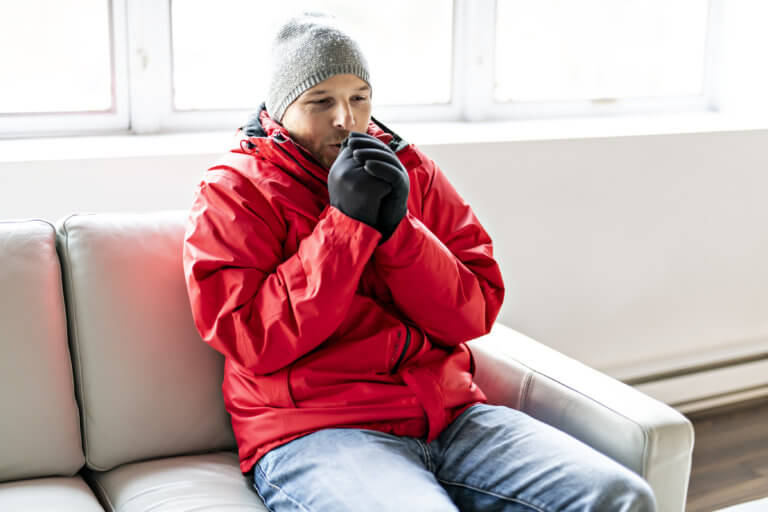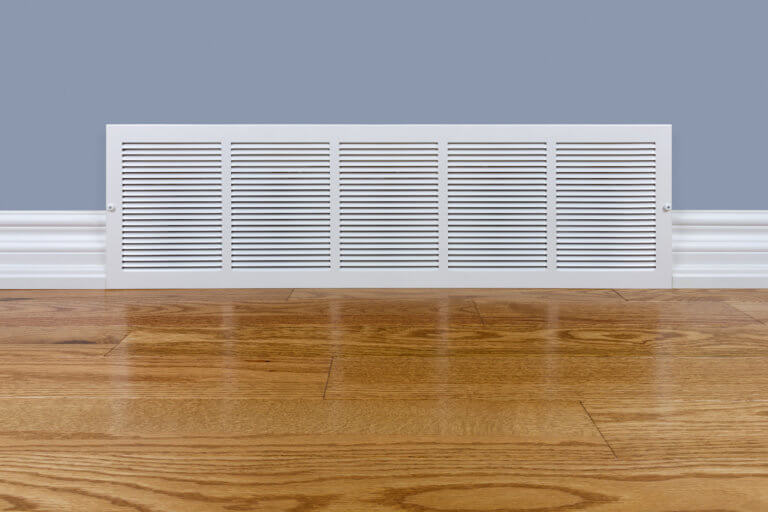Have you noticed that one of your rooms is typically hotter or colder than the others in your home? If so, you are not alone. Uneven heating and cooling is a common problem for homeowners. If your home is suffering from uneven temperatures, you’re probably wondering what is causing the problem. Well, a variety of factors can come into play here, including the structure of your home, air flow blockages, and an inadequate or broken HVAC system.

It can be hard to evaluate all of these potential factors yourself. However, it is crucial that you get to the bottom of the issue, because uneven temperatures can signal larger, more serious problems within your HVAC system. Thus, it’s important to consult a professional to help diagnose what’s causing the problem and determine the best solution for your home.
Common Reasons for Uneven Temperatures
Below are some of the most common reasons that you may be experiencing uneven temperatures:
Blocked or Dirty Air Vents: If air flow through your vents has become obstructed, it will prevent heated or cooled air from being pumped into certain rooms of your home. Air flow may be blocked by dirt or dust that naturally builds up on air vents over time. Air flow may also be blocked by vents that are accidentally closed or that are covered by furniture or household items.
AC Unit or Furnace is Too Small: Another common reason that homes are not evenly heated or cooled is that the AC unit and/or furnace are too small for the space. If your system is too small for your space, it will struggle to properly heat and cool the entire area.
Inadequate Insulation: If you don’t have enough insulation in your home – or if your insulation is old or poorly installed – it can contribute to uneven temperatures in your home. Inadequate insulation can allow heat and cold into and out of your home through walls and attics. This can also lead to higher electric bills because your HVAC system has to work overtime to compensate for this undesired air transfer.
Windows: One of the more obvious causes of uneven temperatures is windows that are frequently left open, even slightly. While the fresh air might be tempting, it will throw off your HVAC system and force it to work harder than necessary. Even if the windows are left closed, a lot of air transfer occurs through the glass, especially on larger windows (or those that get direct sunlight).
Air Duct Problems: Air ducts transport air to and from your HVAC system. If your air ducts become damaged, it can cause air to seep out of the ducts or prevent air flow through them. If this occurs, it forces your HVAC system to work extra hard to heat and cool your home, which can cause uneven temperatures. Air duct damage includes leaks, dents, and clogs. Additionally, your air ducts may simply be the wrong size for your space or laid out wrong in your home.
Multi-story Homes: Uneven temperatures are very common in homes with multiple floors. Heat rises, so having two (or more) floors, tends to cause uneven heating and cooling. Upper levels tend to be much warmer than lower levels.
Return Vent Issues: Return vents suck air back up into your system to be heated or cooled. If there aren’t enough return vents throughout your home, or if they are located in the wrong places, your home may experience uneven temperature issues.

Solutions to Correct Uneven Heating and Cooling
Below are some potential solutions to the common issues mentioned above.
Clean Air Vents: If dirty air vents are the culprit, you’re in luck. Simply cleaning dirty vents and changing old air filters will help increase air flow through your vents. It’s important to dust or vacuum your air vents and change your air filters regularly. If you’re using cheaper fiberglass filters it is recommended that you change them once a month. If you’re using pleated air filters, you should change them approximately every 6 months. If you’re experiencing uneven heating and cooling, double check to make sure that all of your air vents are open. It’s not uncommon for vents to be accidentally left closed. Also, ensure that there isn’t any furniture or household items blocking your vents.
Use Ceiling Fans: Ceiling fans can help increase air circulation in your home. This is especially helpful if you have high ceilings. Air can become trapped at the top of a room, making it feel colder at floor level. Simply switching on your ceiling fan can help circulate this air and help even out your home temperature.
Consider a Zoning System: Another solution to correct uneven temperatures is to install a zoning system. Zoning systems allow you to set different temperatures for different “zones” or areas of your home. This can be especially beneficial for multi-story homes, because it allows you to regulate the temperature of each floor separately.
Keep Fan On: Most thermostats have a fan switch that allows you to set the system fan to one of three settings: “Auto,” “On” or “Off.” If you typically have your thermostat fan set to “Auto,” you might try switching it to “On.” In Auto mode, the fan only circulates air when the system is actively distributing heated or cooled air. In “On” mode, the fan will continue to circulate air even when the system is not actively heating or cooling. Leaving the fan on will increase air circulation, which can help even out temperatures throughout your home.
Insulation: Adding blinds or curtains to large windows can help insulate your home and reduce heat transfer through your windows. Adding more or better insulation in walls and attics can also help improve the consistency of temperatures around your home.
Consider Upgrading Part or All of Your System: Upgrading your HVAC system may not be the most appealing option as it can be more pricey than other solutions. However, upgrades can save you a lot of money in the long run because they improve the efficiency of your system and can cut your utility bills dramatically. Consider whether it might be time to upgrade or repair your air ducts, return vents, or entire HVAC unit. Experts recommend that air ducts should be replaced every 10 to 15 years. Additionally, installing more return vents or moving them to better locations can improve the temperature consistency in your home. If the size of your HVAC system is the problem, you may need to upgrade to a larger unit to ensure even cooling and heating of your home.
What to Do if You’re Experiencing Uneven Heating or Cooling
There are many factors to consider when trying to determine why you’re experiencing uneven heating and cooling. While you may be tempted to try and correct the issue yourself, you should call an experienced professional HVAC technician if you notice uneven heating or cooling in your home. A professional can help evaluate your unique situation and suggest the best solution for you. Uneven temperatures can be a sign of deeper, more serious HVAC issues, so it’s important to contact a professional at the first sign of uneven heating or cooling.
Contact Your Local TemperaturePro Today
At TemperaturePro, our trusted HVAC technicians are trained, friendly, and ready to help you with any heating and cooling issues you may have. We’ll never try to sell you anything you don’t need. Honesty is one of our core values and we genuinely care about your comfort and well-being. Our technicians will work with you to thoroughly evaluate your system and explain what may need repair and why. Contact us today to schedule a repair or maintenance visit here.



